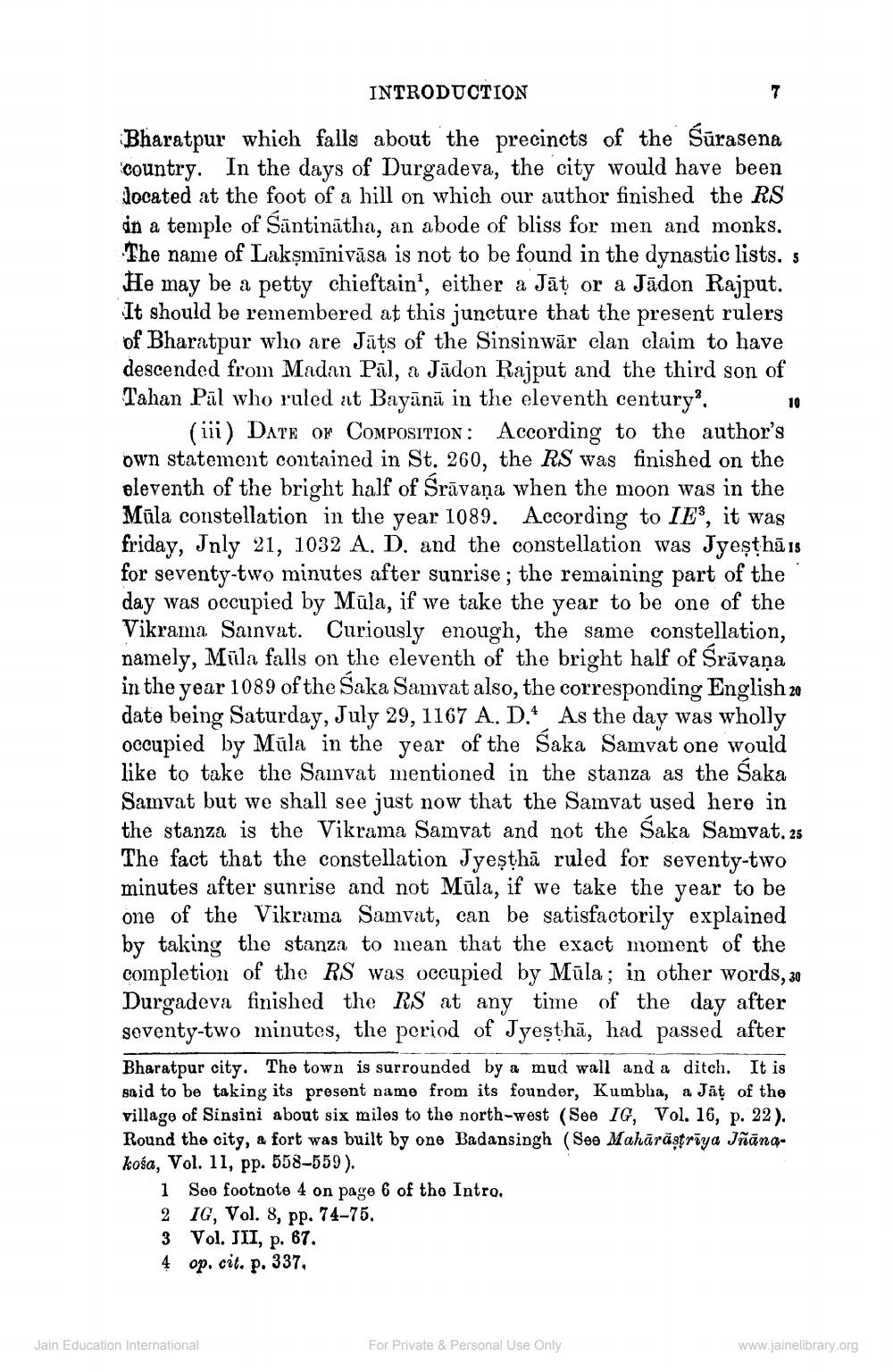________________
INTRODUCTION
Bharatpur which falls about the precincts of the Śūrasena country. In the days of Durgadeva, the city would have been Jocated at the foot of a hill on which our author finished the RS in a temple of Säntinātha, an abode of bliss for men and monks. The name of Lakşmīnivāsa is not to be found in the dynastic lists. s He may be a petty chieftain', either a Jāt or a Jādon Rajput. It should be remembered at this juncture that the present rulers of Bharatpur who are Jāts of the Sinsinwār clan claim to have descended from Madan Pāl, a Jādon Rajput and the third son of Tahan Päl who ruled at Bayānā in the eleventh century? 10
(ii) DATE OF COMPOSITION: According to the author's own statement contained in St. 260, the RS was finished on the eleventh of the bright half of Srāvana when the moon was in the Mūla constellation in the year 1089. According to IES, it was friday, Jnly 21, 1032 A. D. and the constellation was Jyeșthā is for seventy-two minutes after sunrise; the remaining part of the day was occupied by Müla, if we take the year to be one of the Vikrama Sarnvat. Curiously enough, the same constellation, namely, Müla falls on the eleventh of the bright half of Srāvana in the year 1089 of the Śaka Samvat also, the corresponding English 20 date being Saturday, July 29, 1167 A. D.4 As the day was wholly occupied by Müla in the year of the Saka Samvat one would like to take the Samvat mentioned in the stanza as the Saka Samvat but we shall see just now that the Samvat used here in the stanza is the Vikrama Samvat and not the Saka Samvat. 25 The fact that the constellation Jyeșthā ruled for seventy-two minutes after sunrise and not Mūla, if we take the year to be one of the Vikrama Samvat, can be satisfactorily explained by taking the stanza to mean that the exact moment of the completion of the RS was occupied by Mūla; in other words, 30 Durgadeva finished the RS at any time of the day after seventy-two minutes, the period of Jyeșthā, had passed after Bharatpur city. The town is surrounded by a mud wall and a ditch. It is said to be taking its present name from its founder, Kumbha, a Ját of the village of Sinsini about six miles to the north-west (See IG, Vol. 16, p. 22). Round the city, & fort was built by one Badansingh (Seo Mahārāstrāya Jñāna. kośa, Vol. 11, pp. 558-559).
1 Soe footnote 4 on page 6 of the Intro. 2 IG, Vol. 8, pp. 74-75. 3 Vol. JII, p. 67. 4 op. cit. p. 337.
Jain Education International
For Private & Personal Use Only
www.jainelibrary.org




